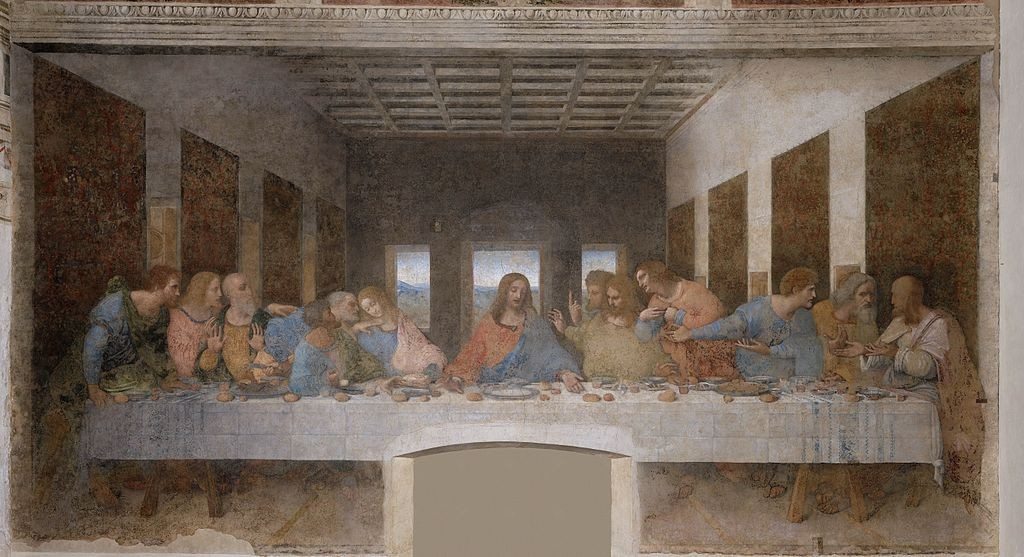The Last Supper by Leonardo da Vinci
Episode #5 of the course “Most famous paintings of all time”
Year: 1494–1499
Type: tempera on gesso, pitch and mastic
Dimensions: 460 cm × 880 cm (181 in × 346 in)
Location: Santa Maria delle Grazie, Milan
The Renaissance’s most renowned painter, Leonardo da Vinci, is known for several masterpieces, including The Last Supper. Completed in 1499 on the wall of the convent in the Santa Maria delle Grazie in Milan, Italy, the painting is over 10 feet high and nearly 30 feet long. Da Vinci painted directly onto the soft wall in a series of fresco-like layers that suffered great damage. In da Vinci’s lifetime, the painting was already flaking, and in the following 500 years it has undergone numerous restorations. Millions of international visitors continue to visit the painting, and it remains one of the most studied artworks of all time.
The Last Supper depicts the scene described in the biblical book of John chapter 13 verse 21, when Jesus tells his twelve disciples that one of them will betray him. Making Jesus the central figure, Da Vinci used color to indicate a heavenly light around him. Jesus’ triangular body shape draws the eye as well as symbolizes the holy trinity present in the moment, which is also the institution of the Eucharist. Da Vinci tried to make the psychological reaction of each apostle present in his body language and facial expression. He believed the “motions of the mind” are seen on the face.
Scholars have analyzed the positions, colors, and expressions of each disciple. Perhaps the most studied is Judas Iscariot, the betrayer. Da Vinci has shown him in dark colors and shadow, indicating his guilt. He holds a small bag, identifying him as the apostles’ treasurer. And as Judas was paid for his betrayal, the bag has been used to condemn him. In recent years, popular controversy about the “feminine” figure to Jesus’ left has raised questions about its identity. Although long accepted as the apostle John, some have begun to wonder if the figure isn’t the gospel character Mary Magdalene.
Learn Something New Every Day
Get smarter with 10-day courses delivered in easy-to-digest emails every morning. Join over 400,000 lifelong learners today!
Share with friends

